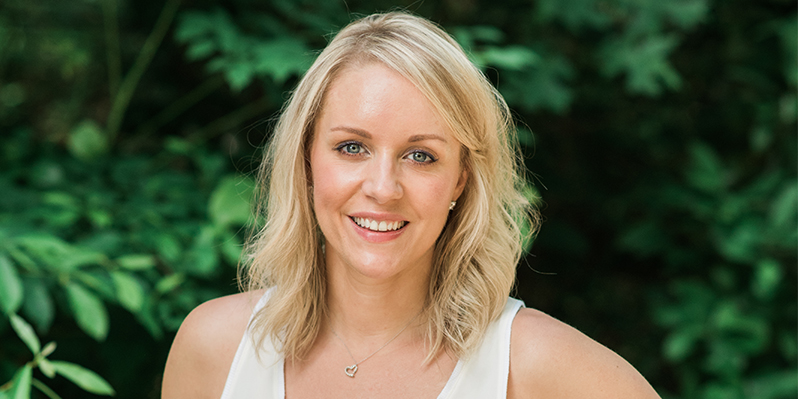When Liberty Mutual Group, one of the largest employers of actuaries in the United States, first visited the University of Vermont to recruit students, only four or five showed up. It was 2006 and at the time, many undergraduates hadn’t heard of actuaries – highly trained professionals who use statistical formulas to calculate risk for insurance policies and pension funds.
Soon after, however, actuaries began topping the “hot job” lists. As a result, “the second time Liberty Mutual came to campus, around 2010, the room was overflowing,” says Joseph Kudrle, a senior mathematics lecturer who helped develop UVM’s Actuarial Exam Preparation program.
Today, over a decade later, the growth of the industry continues. The Bureau of Labor Statistics projects 24 percent employment growth for actuaries between 2020 and 2030, a much faster growth rate than the 8 percent average for all occupations.
“They are well-paid, there’s a lot of job satisfaction, and a lot of esteem, like a doctor or lawyer or professor. That aspect of being an actuary attracts a lot of people – those who are in school and those who are out of school and are working professionals wanting to switch careers,” Kudrle said.
Trends in the Actuarial Science Industry
If you asked an actuary to analyze the profession, you might hear something like this:
- Risks of career instability: Very low risk. The actuary industry is stable with room for growth and advancement. By 2030 approximately 5,000 jobs are expected to be created.
- Risk of making less than $100,000: Very low risk. Most actuaries make six figures. The U.S. Bureau of Labor Statistics 2020 median pay was $111,030. BeAnActuary.org says that experienced fellows can make $150,000 to $250,000 or more a year and many earn more than that.
- Risk of not passing the necessary exams: Very low risk if you prepare through a proven program. Students prepared in the UVM program, for instance, have a 75 percent exam success rate, compared with 50 percent nationally. Even if students don’t pass any exams beyond the first two, they still can continue to work as actuarial analysts or consultants and make a decent living, Kudrle points out.
Steps to Becoming an Actuary
Not all actuaries have followed a highly structured path, graduating with actuarial science degrees from big state schools. In fact, many firms prefer to hire liberal arts majors.
“For sure, you need to have quantitative skills, but a National Life representative told me they’re also looking for individuals who are dynamic and who can communicate, who can think critically, and who can do the work,” Kudrle recalls. “One company mentioned their head guy was a philosophy major and that they don’t like getting candidates from the big farm-factory schools. They feel those students are pigeon-holed.”
UVM’s Actuarial Exam Preparation program prepares students to take the actuarial exams. After passing two exams, students can be recruited into jobs as actuarial analysts.

How to Pass the Actuary Exams
BeAnActuary.org suggests 100 hours of study for each hour of an exam; the P/1 three-hour exam, for example, requires 300 hours. You can check out example exam questions to get a feel for the type of knowledge needed.
“A lot of people burn out on taking all the exams,” Kudrle says. “If you get into a company and get into their actuarial department, you might decide the exams aren’t for you. But once you get your foot in the door, then you can find the job that best fits you. Some people become actuarial analysts; others become consultants.”
It’s standard practice for companies to support their employees in taking the exams: by paying exam fees and by providing paid study time.
“They’ll pay for you to take the actuary exams, usually with time on the clock. You have so many hours a week, and those are study hours for you,” Kudrle explains. “But there also is time off the clock. If you pass an exam, there is a pay jump and more responsibility.”
However, he notes, some people don’t fully understand how much they have to study for the exams until they fail them. It can take six to eight years to pass all the exams. “The exams are tough,” he says. “You almost have to immerse yourself in it.”
Companies and Organizations That Employ Actuaries
Figures from both of the leading professional organizations for actuaries — Casualty Actuarial Society and Society of Actuaries – show that the majority of actuaries work in the Northeast and Midwest.
The bulk of actuaries across the U.S. – 48 percent, according to the Society of Actuaries – work for insurance companies. These actuaries use statistics and theory to analyze the financial impact of risks for life, home and auto insurance. They may consider how likely it might be for a 25-year-old male to be involved in an auto accident. Or how much fire risk there is in a 100-year-old owner-occupied house located far from a fire hydrant. Or whether to grant insurance to a family with a trampoline in the backyard.
Actuaries also work as consultants at large private or small independent firms, helping companies design pension and benefit plans.
Besides Liberty Mutual, top private employers of actuaries – both in insurance and pensions/benefits – include Travelers, AIG, Chubb, Willis Towers Watson, The Hartford, Allstate Insurance Company, Milliman Inc., Zurich North America, Aon, Mercer, Manulife, Prudential Financial Inc, Sun Life, MetLife, RGA, United Health, and CNA Insurance Companies.
But you also can find actuaries working in government, assisting with regulations; as consultants, helping develop strategic change initiatives for private corporations; and teaching at colleges and universities. Other organizations employing actuaries include bank and investment firms, public accounting firms, labor unions, rating bureaus, and fraternal organizations.
Editor’s note: this post was originally published in 2014 and has been revamped and updated for accuracy.




